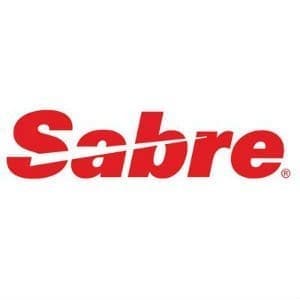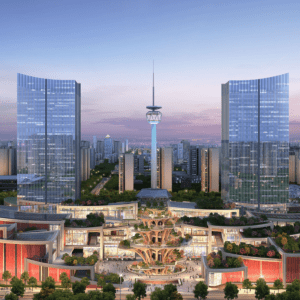Travel and hospitality sustainability consultancy and research firm, Greenview, in partnership with Green Lodging News, this week released data from the first comprehensive Green Lodging Survey – the Green Lodging Trends Report 2016.
The results presented in the report are based on data collected from 2,161 hotels located in 44 countries around the world, 1,875 of them located in Asia Pacific. The findings specifically relate to eco-friendly and sustainable practices within the hotel sector and the data focuses on practices and initiatives grouped into ten categories: air quality, energy management, waste management, water conservation, cleaning and maintenance, kitchen and laundry, communication, staff involvement, community involvement and procurement. Launched as an annual report, the Green Lodging Survey (GLS 2016) will provide a benchmark for green teams globally, allowing them to track their progress and compare practices with similar properties.

Florida, U.S.A
“Asia is a significant force within the global hospitality industry and the region has seen more hotels open over the last few years compared to the rest of the world combined,” says Grace Kang, managing partner, Greenview. “The importance of implementing sustainable practices in hotel across Asia has therefore never been more important than it is today.”
Within and beyond Asia Pacific, the hospitality industry has long been known for its energy usage, water consumption and tendency to produce waste. However, as environmental concerns have become more prominent on the world stage, many common green practices have been implemented in hotels that go beyond the more familiar approaches such as encouraging guests to re-use towels and linens in order to save on water and reduce pollution from detergents.
“We’re applying the same competitive set benchmarking exercises that hotels do for revenue, occupancy, and amenities, and applying this with a sustainability lens. Nobody questions the value of top-line benchmarking, and we argue that sustainability benchmarking is even more valuable. The annual benchmarking exercise enables hotels to manage and improve performance over time to stay competitive.” explains Ms. Kang.
Energy management is one such common practice and 89% of respondents in the GLS 2016 indicated they track energy consumption. The use of variable frequencies had an uptake of almost 90%. In both of these practices, Asia Pacific hotels were above the global average. The use of high-efficiency boilers had an uptake of 70%, while high efficiency chillers had 59%.
Lighting is another area where hotels have made significant progress in terms of sustainable energy practices with 70% of hoteliers in the GLS 2016 saying they have replaced at least 75% of incandescent or compact florescent lighting with LEDs. However, lower uptake was recorded in areas such as waste heat recovery, an approach used by just 12% of respondents, and still a nascent practice, solar PV panels were used in only 8% of the hotels surveyed.
Surprisingly, several of the best-known approaches to sustainability with proven benefits in terms of operational efficiency, cost reduction and even enhancing guests’ experience have yet to be implemented by hotels in the survey. Almost one-third of respondents said they had yet to install digital thermostats in their rooms, and although most hotels have some form of linen/towel re-use policy, less than half of the hotels in the GLS 2016 have implemented programs that change linens upon request or every three days as a default.
Waste management is another area where hotels can make small changes that have a significant impact. Installing re-fillable soap and shampoo dispensers in hotel rooms instead of disposable single use amenities is a strategy that 41% of properties observe. Simple practices such as not delivering newspapers to every guestroom saves a lot of paper. This practice had an uptake of 82% globally and 75% in Asia Pacific.
Water conservation is an important topic for certain parts of Asia Pacific. Efficient water fixtures can reduce water cost and consumption significantly. When it comes to low-flow water fixtures, Asia Pacific had a higher uptake on installing low-flow toilets compared with efficient faucets and showerheads (see graphs below).

using local materials.
Technology also plays an increasingly significant role when it comes to hotel sustainability. Sensors, specialist building equipment and software were all commonly cited in relation to energy, water and waste management. Some technological innovations are now becoming more commonplace while systems such as reverse osmosis and composting machines are still less commonly used in hotels.
Finance also remains a key issue when it comes to the implementation of sustainable practices in hotels. Unless some form of ROI can be demonstrated, significant capital is rarely spent on green approaches unless they are also seen as aesthetically pleasing. Such attitudes are often based on a certain perception of guest expectations. However, nearly a quarter of GLS 2016 respondents indicated that they did not know their guests’ level of interest in sustainability.
“Most of the aspects we benchmark also reduce costs. This means the exercise enables a hotel see that if it hasn’t put in a common item like a digital thermostat, not only is the property falling behind in terms of guest expectations, but it’s also wasting money because of it,” adds Ms. Kang.
Of all the hotels in the GLS 2016, some 69% said they have established a green team or committee to monitor and measure their sustainability. These teams are already helping to improve the industry’s green performance, and 79% of hoteliers said they hold staff training sessions on sustainable practices at least once a year. “The green teams may be the unsung heroes of green lodging and this survey and report are tools that speak directly to them to help them in their great efforts,” says Ms. Kang. Finally, through the annual benchmarking exercise, we reach hotels across the globe of all types, and can find the unique things going on each year to highlight best practices and innovation for the industry.”
The Green Lodging Trends Report 2016 is available at http://www.greenview.sg.




















